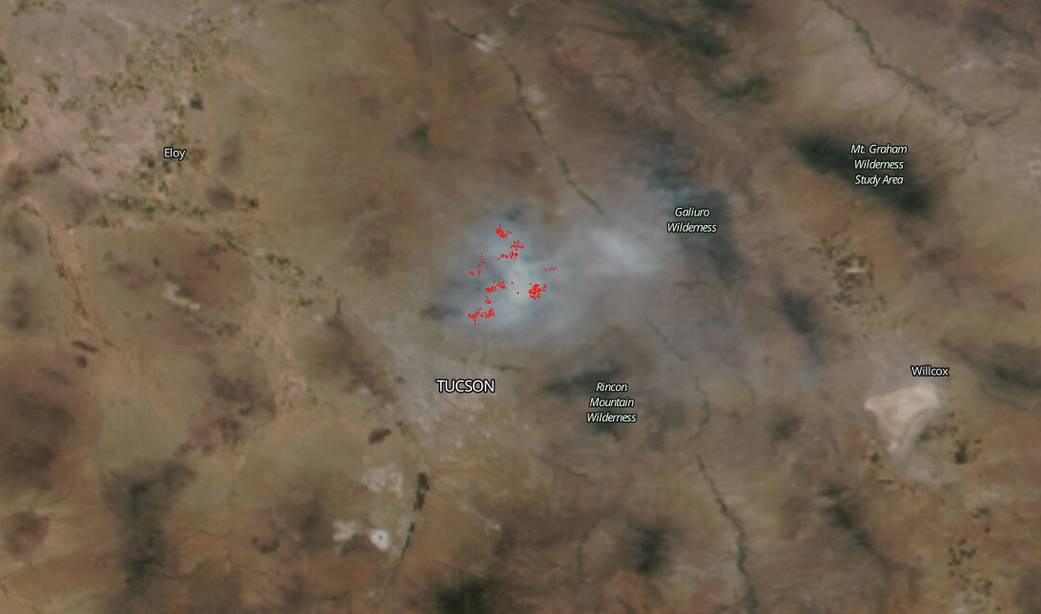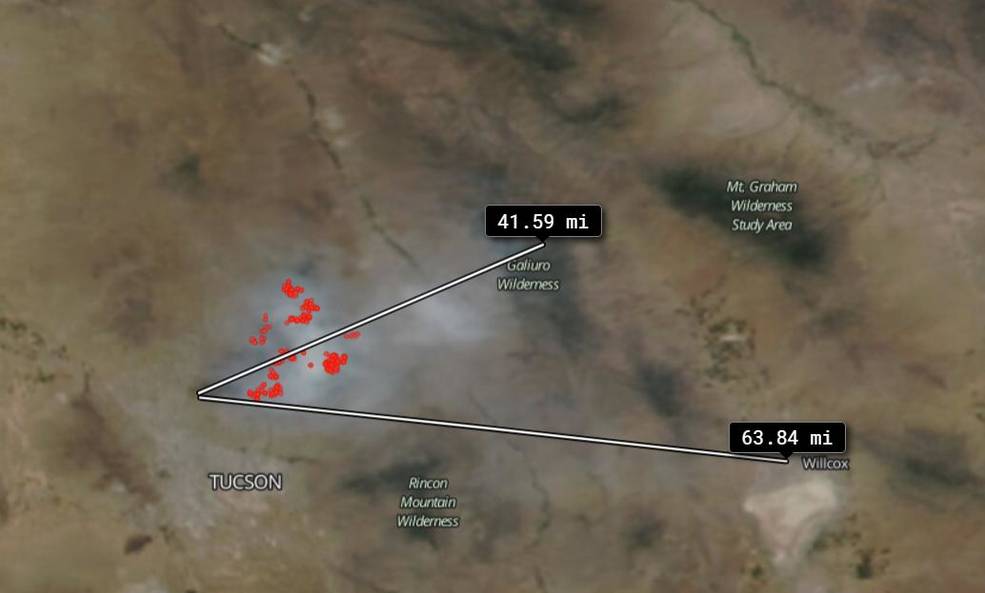NOAA/NASA’s Suomi NPP satellite captured this image of the Bighorn Fire on June 22, 2020, showing clouds of smoke pouring off this fire that is plaguing Arizona. On June 24, the fire has grown to 65,536 acres and is 33 percent contained. On June 05, 2020, a lightning strike started the Bighorn Fire in the Catalina Mountains northwest of Tucson, Arizona on the Coronado National Forest. Due to current dry, windy weather conditions the fire has pushed closer to communities forcing evacuation. Dry conditions also add to fuel stores of tinder-dry tall grass, brush, dormant brush and hardwood slash.
The fire is burning in steep and rugged terrain in the Pusch Ridge Wilderness. Catalina State Park and several popular trails in the area are closed including Romero Canyon, Pima Canyon, Finger Rock, Pontatoc, Pontatoc Ridge and Linda Vista. Smoke impacts to surrounding communities are being carefully monitored.
The Suomi NPP image below illustrates the flow of the smoke from the Bighorn Fire which extends out 63 miles southeast and 41 miles to the northeast. The ruler is an application which is available through the Worldview website to measure distances.
NASA’s satellite instruments are often the first to detect wildfires burning in remote regions, and the locations of new fires are sent directly to land managers worldwide within hours of the satellite overpass. Together, NASA instruments detect actively burning fires, track the transport of smoke from fires, provide information for fire management, and map the extent of changes to ecosystems, based on the extent and severity of burn scars. NASA has a fleet of Earth-observing instruments, many of which contribute to our understanding of fire in the Earth system. Satellites in orbit around the poles provide observations of the entire planet several times per day, whereas satellites in a geostationary orbit provide coarse-resolution imagery of fires, smoke and clouds every five to 15 minutes. For more information visit: https://www.nasa.gov/mission_pages/fires/main/missions/index.html
NASA’s Earth Observing System Data and Information System (EOSDIS) Worldview application provides the capability to interactively browse over 700 global, full-resolution satellite imagery layers and then download the underlying data. Many of the available imagery layers are updated within three hours of observation, essentially showing the entire Earth as it looks “right now.” Actively burning fires, detected by thermal bands, are shown as red points. Image Courtesy: NASA Worldview, Earth Observing System Data and Information System (EOSDIS). Caption: Lynn Jenner with information from Inciweb.





























